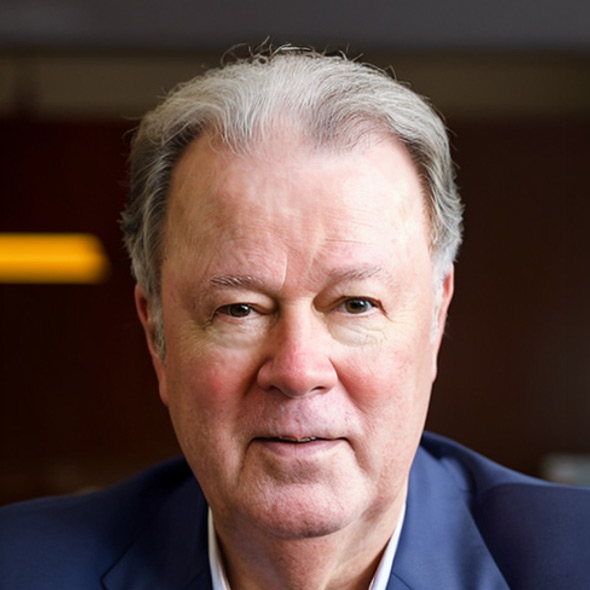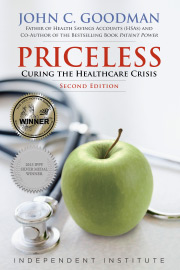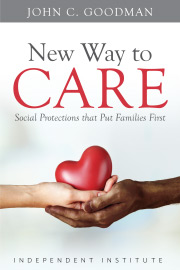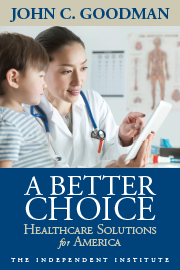While Elon Musk and Vivek Ramaswamy pursue a goal of reducing government waste, the critics have been quick to claim it can’t be done. The reason? If you don’t touch entitlements (Social Security and Medicare, for example) they say, there is not enough waste to be found.
Yet there is quite a lot of waste in our entitlement programs. And there are numerous opportunities to cut spending and raise the quality of entitlement benefits at the same time. Here are some examples.
Health Savings Accounts (HSAs). These are devices employers and employees use to pay medical expenses not covered by third-party insurance.They achieve two important social goals. First, if individuals need medical care, money in the account makes sure they will be able to pay for it. In other words, people won’t forgo care for lack of funds. Second, since money not spent on medical care can later be withdrawn and spent on non-health care goods and services, people have an incentive to avoid waste.
The second goal may be more important than the first. Some estimates suggest that as much as 25 percent of U.S. health care spending is wasteful. Our current use of HSAs acts as a corrective, but it is a highly imperfect one.
If money is withdrawn for non-health care purposes (before age 65), it is subject to income taxes plus a 20 percent penalty.
Thus, an individual in the 15 percent income tax bracket who withdraws a dollar from his HSA and spends it on non-health consumption will have to pay 35 cents to the government. That means that a dollar’s worth of health care is trading against 65 cents of other goods and services.
If health care is worth only 66 cents on the dollar, it will still be the better option. In this way, the individual is encouraged to spend on health care even if up to a third of the money spent prices nothing of value.
The bottom half of the income ladder pays almost no income taxes. But they are still facing the 20 percent penalty for non-medical withdrawals.
Roth HSAs. A Roth HSA would be characterized by after-tax deposits and tax-free withdrawals. If there were no penalties for non-medical withdrawals, health care and non-health care would trade against each other on a level playing field under the tax law. People wouldn’t spend a dollar on health care unless they got a dollar’s worth of value.
Now suppose we offer Medicaid enrollees the opportunity to have a Roth HSA in return for taking personal responsibility for a portion of their care—say, all primary care.
Medicaid itself (or one of the companies that manages Medicaid for 75% of the enrollees) could make the deposits. Enrollees would be restricted to using the money for health care during the insurance period. But when the year has ended, they could withdraw the funds for any purpose.
How much would be saved? The current use of HSAs is estimated to reduce total health care spending by account holders by 5% to 7%. But, back before the government doubled the penalty for non-medical withdrawals, the RAND Corporation estimated the spending reduction was 21%. A much earlier study by RAND found that high-deductible insurance reduces spending by 30%, Since all spending was after-tax in that study, those results are the most applicable to the Roth accounts.
Ignoring spending on the disabled and nursing home care, if the remainder of Medicaid spending could be reduced by 30 percent, that would amount to almost $1 trillion in savings over ten years. This saving would be divided among the beneficiaries and the taxpayers who fund Medicaid.
We could probably double that number by creative programs of self-management and self-directed care for the rest of the Medicaid population.
Roth HSAs should also be offered to the elderly and the disabled on Medicare. If half of the beneficiaries had one, savings would as much as $1.8 trillion—again, shared by beneficiaries and taxpayers.
Paying Market Prices. When people are newly enrolled in Medicaid, their visits to the ER increase by 40 percent! A likely reason is that many doctors won’t see Medicaid patients and even if they do, they are the last patients doctors want to see. Also, many of our best medical centers won’t take Medicaid managed care.
Medicaid rates are often half the prices charged at walk-in clinics and urgent care centers. Even if some accept Medicaid fees, they rarely locate in areas where Medicaid enrollees live.
One answer is to let Medicaid patients buy medical care the way they buy food. In the supermarket, low-income shoppers are free to combine Food Stamp funds with out-of-pocket money and pay market prices. In health care we have made that option illegal.
In a reformed system, Medicaid enrollees could still get free care at the emergency room and possibly lose a day’s pay. (The in-and-out time at Parkland, a safety net hospital in Dallas, is almost 6 hours!) Or they could save time and taxpayer money by getting care where middle-class patients go.
If this reform (coupled with 24/7 primary care described below) can cut Medicaid emergency room spending in half, it would save the federal and state governments as much as $135 billion over 10 years.
Reducing Fraud. According to the General Accounting Office, fraud in Medicare and Medicaid amounts to $100 billion a year, and they admit that’s a low estimate.
In principle, credit card fraud should be much easier to commit than health care fraud. (Think of how often your card goes out of sight in the possession of a waiter or other vendor.) Yet losses to credit card fraud amount to a fraction of 1 percent of spending. If the federal government could manage Medicare and Medicaid as efficiently as the credit card industry (or maybe contract out to them) the savings would approach $1 trillion over ten years.
An Optional Medicaid Block Grant. State governments should have the option of receiving 90% of their federal Medicaid dollars in the form of a block grant—saving federal taxpayers the other 10%. With their share, the states could do some of the things already discussed. They could create Roth HSAs outside the federal tax system. They could make deposits to these accounts and let enrollees pay market prices for their care.
They could also allow HSA money to be used to pay the fees of “direct primary care” doctors who provide all primary care 24/7 (including telemedicine) for as little as $50 a month for an adult and $10 for a child.
If every state accepts the deal, taxpayer savings would be $630 billion.
Other Reforms. The Paragon Health Institute has identified 12 reforms that have the potential to reduce Medicare and Medicaid spending by $2.1 trillion. They include such items as paying hospitals the same fees Medicare pays doctors when the services are identical.
Also, President Biden’s recent Medicaid rule changes are expected to add between $137 to $270 billion to federal spending. Taxpayers could be spared that expense if President Trump revoked those new rules.
Since the reforms I have described here interact with each other, the numbers cannot be added up a in simple way. Yet they strongly suggest that we could save in the neighborhood of $7 trillion overall, mostly in the form of taxpayer savings.
And that’s without trying very hard.












